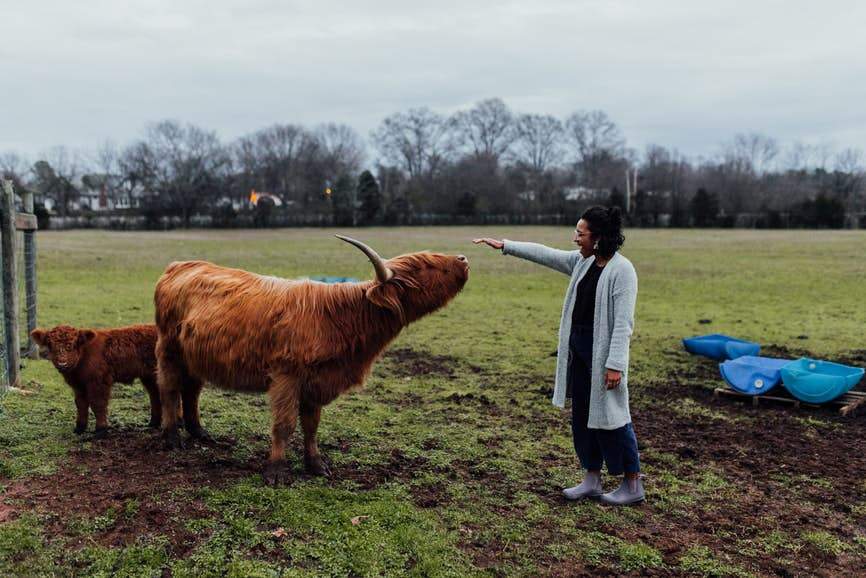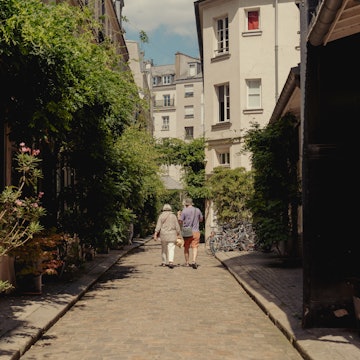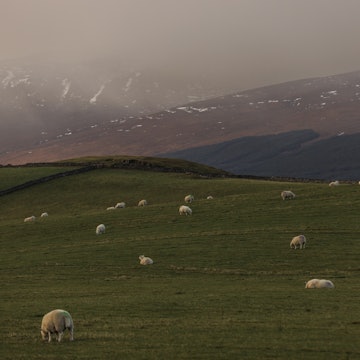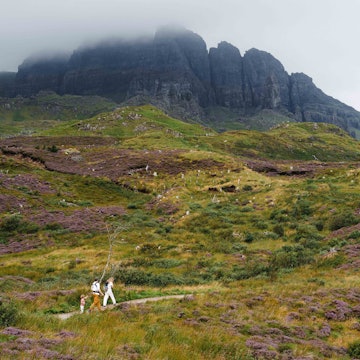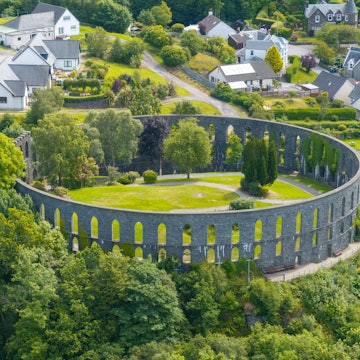
West coast of Scotland: how to choose the best island for your trip

May 27, 2025 • 13 min read
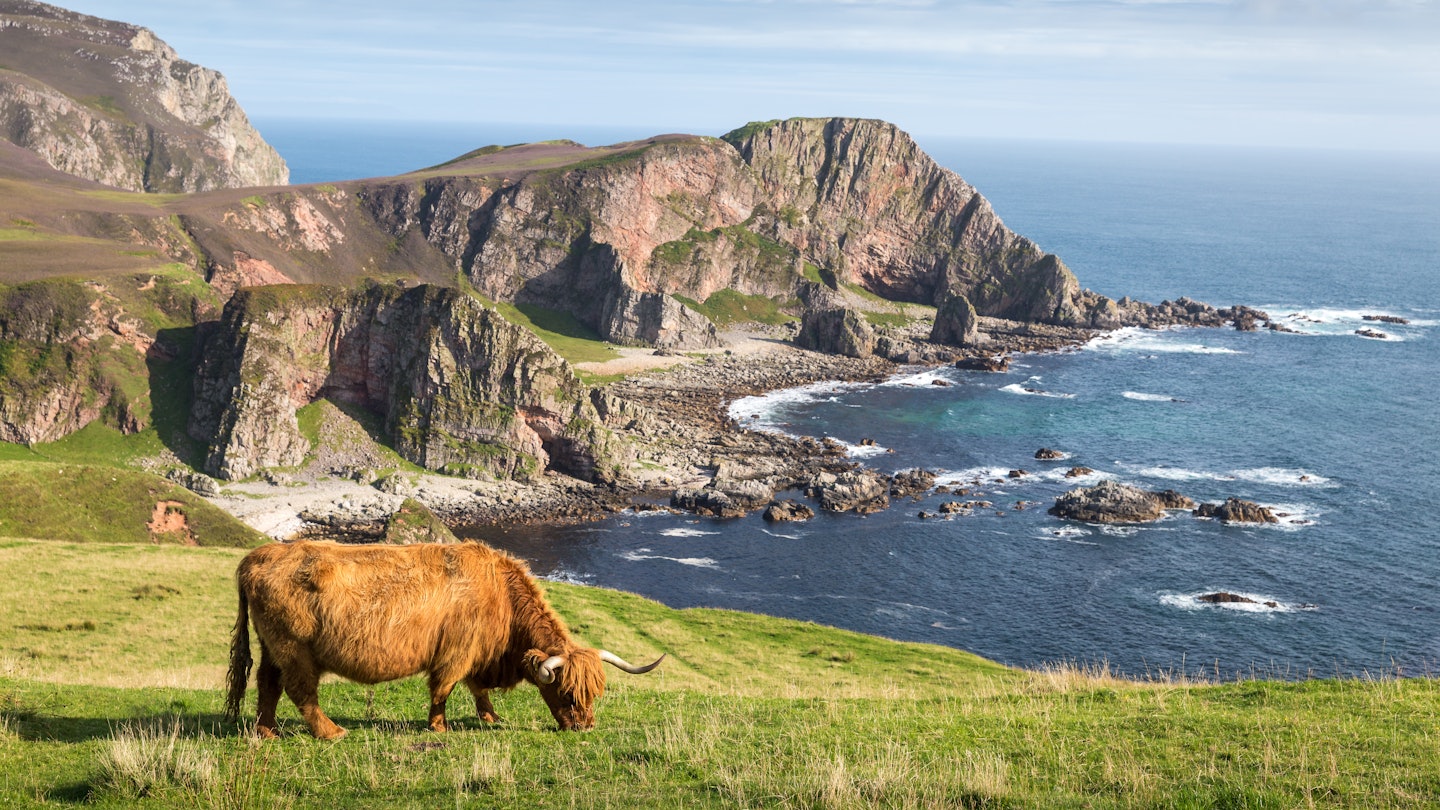
Escape to dramatic landscapes with this guide to Scotland's West Coast islands. Kevin Standage/Shutterstock
Scotland’s islands are the soul of the nation – home to hardy islanders who embrace their ancient culture and language, the lore of the sea, and their wonderfully windswept environment. On the scattered isles of the Inner and Outer Hebrides, you’ll find cozy villages, timeless ruins and wildlife aplenty, alongside some of Scotland’s best whisky. But with so many islands to choose from, where do you start?
Picking the perfect island on the West Coast of Scotland will depend on your tastes, and how much time you have at your disposal. Reaching many of the most rewarding Scottish Islands involves a slow journey by ferry through the Sea of the Hebrides – a waterway alive with seals, cetaceans and seabirds.
Plan your trip around the weather to get the best from Scotland’s islands. Whether you’re drawn by outdoor adventures, wildlife encounters, distillery tours or prehistoric ruins, here’s our guide to the best islands on the West Coast of Scotland.

1. Arran
Best for foodies
In three words: food, castles, hikes
The southernmost island on Scotland’s West Coast, Arran is a geological marvel, owing its character and existence to shifting tectonic plates. Scotland’s most dramatic and significant geological divide, the Highland Boundary Fault, travels diagonally through the island, forging Arran’s very own Highlands and Lowlands.
Arran’s unique geology and microclimate directly influence the island’s acclaimed local produce, from seafood, cheeses and ice cream, to the oatcakes made by Wooleys of Arran. For drinks, take a tour of the partnered Lochranza Distillery and Lagg Distillery, try island-made real ale at the Isle of Arran Brewery or Seagate Brewery, or sample island flora-based cocktails at Cladach Beach House.
By day, explore the family-friendly Brodick Castle or delightfully ruined Lochranza Castle, and feel the eerie mystery of the Machrie Moor Standing Stones. Then head uphill on the hiking trail to the top of mighty Goatfell (874m/2867ft) for life-affirming island views, or tackle the 65-mile (105km) shoreline-hugging Arran Coastal Way.
Getting there: Take the CalMac ferry from Ardrossan to Brodick or the local ferry between Claonaig (Kintyre) and Lochranza.

2. Islay
Best for whisky enthusiasts
In three words: whisky, biking, ruins
Whisky is the heart, soul and spirit of Islay, thanks to the peat-rich soil and naturally filtered water from the island's springs and inland lochs. Islay (pronounced "eye-la") is a wonderland for whisky-lovers, with no less than 10 whisky distilleries and more in the pipeline.
Plan your days around your distillery visits. By the coast near Port Ellen are the famous premises of Laphroaig, Lagavulin and Ardbeg, producing whiskies at the smoky end of the scale. Other recommended distilleries include the reopened Port Ellen Distillery, the Bruichladdich Distillery and the Bowmore Distillery, home to Scotland’s oldest whisky warehouse. Meanwhile, Port Askaig has the stylishly refurbished Caol Ila Distillery, facing across to the spectacular Paps of Jura.
Other ways to immerse yourself in Islay include e-biking along the Three Distilleries Path, “fat biking” along the island’s beaches, and spotting grey seals at the Rhinns of Islay peninsula. To get deeper into nature, take a walk on Islay’s wild side at the Mull of Oa, an RSPB nature reserve home to harriers, peregrine falcons and golden eagles in summer.
For a dose of history, head to the ruins of Finlaggan – the historic hub of the powerful Clan MacDonald. Remnants of the clan’s coastal stronghold at Dunyvaig Castle can be found on a rocky outcrop at Lagavulin Bay. Traveling further back in time, the elaborately carved Kildalton Cross remains where it was first installed 1200 years ago.
Getting there: Islay has two ferry ports, Port Ellen and Port Askaig, served by daily CalMac ferry services from Kennacraig, or on Saturday from Oban. Loganair flies to Islay from Glasgow.
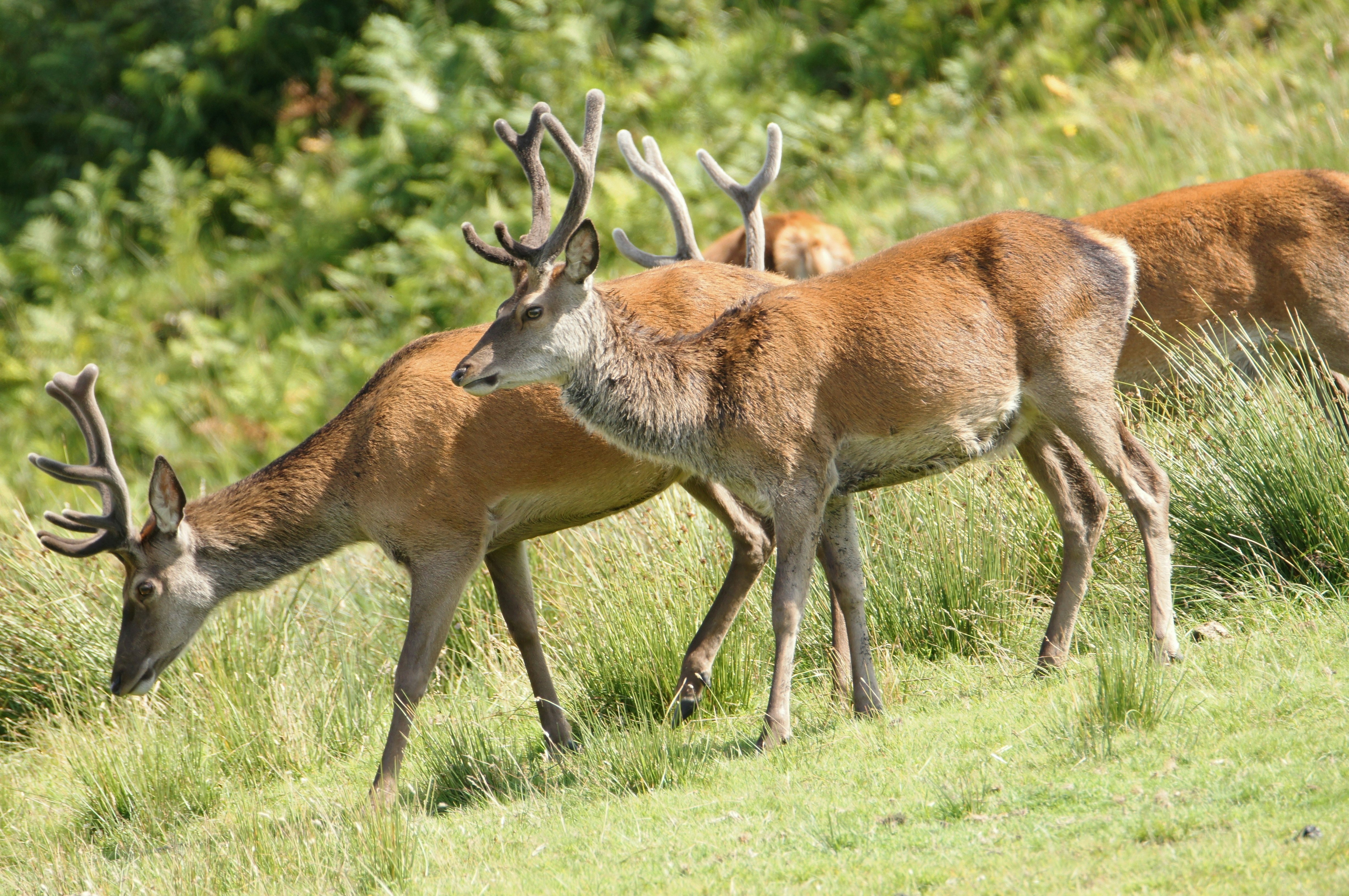
3. Jura & Colonsay
Best for a quieter island experience
In three words: whisky, deer, culture
After the tourist bustle of Islay, things are calmer on its close neighbors, Jura and Colonsay. Most of Jura is claimed by nature, with dominating mountains, remote stretches of coastline and vastly more red deer than people. Colonsay is smaller, low-lying and further out to sea, characterized by stunning beaches backed by vivid wildflowers and machair.
On Jura, join a tour with Discover Jura, to take in the famous Jura Distillery, the Lussa Gin distillery and discover the history of the Campbell Clan, the Clearances and the lonely farmhouse where George Orwell penned Nineteen Eighty-Four. To spot the island’s deer, otters and eagles, hike up the dramatic Paps of Jura with Jura Guided.
On Colonsay, nature takes center stage. From the main village of Scalasaig, hire a bike and cycle to the Strand, where the Isle of Oronsay – an RSPB reserve with the 14th-century ruins of Oronsay Priory – is accessible at low tide. Other rewarding diversions include paddleboarding and the walk up Carnan Eoin for unrivaled views of sand and turquoise sea.
Getting there: CalMac ferries run from Port Askaig on Islay to Colonsay; ferries to Jura from Port Askaig are operated by Argyll and Bute Council.

4. Mull
Best for photographers
In three words: colors, views, culture
The colorful capital of Mull, Tobermory is a guaranteed mood-lifter, thanks to the instantly recognizable rainbow painted facades along its working fishing harbor. Local artisan producers sell tasty foodstuffs, you can tour the Tobermory Distillery and Mull Museum, and there’s even Europe’s first “catch and release” aquarium.
A forest path leads into Aros Park for photos of wooden bridges, waterfalls streaming into the sea and the multihued harborfront. Across the bay, an elevated trail leads to the secluded Rubha nan Gall Lighthouse, with highly snappable views of Calve Island, the West Highland Peninsulas and the Small Isles.
Complete the Mull experience by driving from Tobermory to Fionnphort along Mull’s west coast, visiting heritage centers, tearooms, the triple-cascading Eas Fors Waterfall and white-sand Calgary Beach. Look out for otters and eagles as you follow the shores of Loch Na Keal on the B8073 and B8035.
Mull is also one departure point (others are Iona, Islay and Tiree) for boat trips to the volcano-forged Isle of Staffa, home to the sculptural granite columns of Fingal’s Cave – which inspired legends of giants and an overture by Felix Mendelssohn – and one of Scotland’s largest puffin colonies.
Getting there: CalMac car ferries run from Oban to Craignure; you can also reach Mull from Morvern and Ardnamurchan.

5. Iona
Best for religious history
In three words: pilgrimages, history, beaches
Just a mile from Mull’s southwestern tip, tiny Iona is a place where the beauty and tranquillity seep into your soul. A postcard scene of pretty stone cottages greets you on arrival, preparing you for dreamy beaches, heart-tugging sunsets and the monastery founded by the Irish missionary St Columba in 563 CE.
As the birthplace of Christianity in Scotland, Iona Abbey is still an active pilgrimage destination, and the reconstructed 13th-century Benedictine abbey marks the site of St Columba’s ancient shrine. Other ways to keep busy include investigating local craft shops and workshops, and hiking to the 110m (360ft) cap of Dun I.
Set aside time to walk on Iona’s gorgeously windswept, sandy beaches – White Strand of the Monks, Bay at the Back of the Ocean and Port Bàn offer almost Caribbean, machair-backed strips of sand.
Getting there: Iona is reached by CalMac ferry from Fionnphort on Mull, but visitors must leave their vehicles on Mull.

6. Tiree
Best for cycling
In three words: cycling, surfing, views
The most wholesome and invigorating way to explore sand-sprinkled Tiree is by bike. The island is mostly flat, fringed by dreamy beaches, and freckled with historic relics. From the ferry port at Scarinish, you can cycle 7 miles (11km) past the breathtaking beach at Crossapol to the Hynish Heritage Trail, where you can learn about the construction of the iconic Skerryvore Lighthouse.
Continue on to Balephuil’s scenic beach and the Isle of Tiree Distillery, where you can sample gin made with local botanicals and sea kelp. On the north shore, Balevullin Beach is the place to wriggle your toes in the sand and watch the churning Atlantic waves. Blackhouse Watersports offers surf lessons if you’re tempted to dive in. Before leaving Tiree, visit Dun Mor Vaul, the double-walled remains of an Iron Age broch (defensive drystone tower).
Getting there: CalMac ferries make the slow crossing from Oban to Scarinish on Tiree.

7. Coll
Best for Dark Sky tourism
In three words: stargazing, corncrakes, relaxing
Coll is sublimely suited to those seeking relaxation, with no tick-list of must-sees or activities to worry about. The tranquil village of Arinagour is your portal to a restful escape; nearby, you’ll find dozens of divinely deserted beaches and a thriving RSPB nature reserve, home to rare corncrakes.
After stopping in at the Coll Hotel to sample the Hebridean gin and rum from Isle of Coll Distillery, step outside and gaze upwards. Coll is a designated Dark Sky Community, and one of the best places in the UK for stargazing. Under cloud-free conditions, the sky comes alive with constellations and the glow of the Milky Way.
Getting there: CalMac ferries run to Coll from Oban.

8. Kerrera, Lismore & Easdale
Best for avoiding long ferry crossings
In three words: castles, cycling, swimming
Close to Oban, the often overlooked islands of Kerrera, Lismore and Easdale can be reached without a long ferry trip over choppy seas. On Kerrera, immediately offshore from Oban, you can embark on a half-day walking or cycling adventure to the adorable Kerrera Tea Garden and wander the moody ruins of 16th-century Gylen Castle.
On slender Lismore to the north of Oban, it’s all about local culture. Join Explore Lismore for a tour by Land Rover in search of history, heritage and wildlife, or drop into the Lismore Gaelic Heritage Centre to learn more about this small island’s multilayered heritage. Before departing, take a bike ride to Port Ramsay, or investigate the ruins of the Tirefour Broch and crumbling Castle Coeffin.
Famed as one of the “islands that roofed the world,” Easdale is reached via a brief ferry crossing from the mainland-linked Isle of Seil. It’s home to quarry workers’ cottages, one small pub, a museum devoted to the slate industry, and flooded quarries that lure wild swimmers and stone-skimmers during the World Stone-Skimming Championships in September.
Getting there: Passenger ferries to Kerrera leave from Gallanach near Oban. CalMac runs from Port Appin to Lismore; the crossing from Ellenabeich on Seil to Easdale takes just three minutes.

9. The Small Isles
Best for getting off the tourist trail
In three words: Birding, history, hikes
For a taste of off-the-beaten-track island life, the Small Isles – Rum, Eigg, Muck and Canna – lie strewn across the silvery-blue Cuillin Sound to the south of Skye. If your time is limited, choose Eigg or Rum; they have the most to offer for day trippers.
Eigg takes its name from the Old Norse word for “edge”, a reference to the Sgurr of Eigg (393m/1289ft), an impressive mini-mountain made of volcanic granite that towers over the bay of Galmisdale. Hike to the summit for giddying views. A shorter walk leads to the spooky Uamh Fraing cavern – scene of a massacre of islanders by the MacLeods of Skye in 1577.
Rum is the largest of the Small Isles, and the Rum Cuillin mountains draw hill walkers and climbers. Once known as the Forbidden Island, Rum was reserved for hunting parties until 1957, when it was converted into a nature reserve for deer, wild goats and ponies, otters, golden and white-tailed eagles and Manx shearwaters. Come for coastal walks near Kinloch Castle and the abandoned Clearances-era village of Port-na-Caranean.
Getting there: CalMac ferries run to each of the Small Isles from Mallaig on the mainland.

10. Skye
Best for epic Scottish landscapes
In three words: whisky, walks, wildlife
The landscapes of Skye need no introduction. You’ve already seen the island’s mighty Highland topography in countless Hollywood movies, from Highlander (1986) to Macbeth (2015). Accessible by ferry or road bridge, Skye is arguably Scotland’s favorite island, and it shows in summertime visitor numbers.
Most people base themselves in Portree and Broadford, devoting days to epic hikes up the Old Man of Storr and the Table, Prison and Needle formations at the Quiraing, the achingly scenic drive to Elgol, mountain hiking expeditions on the Cuillin Ridge, and boat trips to spot seals (and potentially dolphins, whales and eagles) on the Isle of Rona.
Whisky aficionados make a beeline for the waterside Talisker Distillery and the Torabhaig Distillery, both producing quality drams, while foodies gather in Portree’s and Broadford’s restaurants for island venison and seafood hauled in along Skye’s indented coastline. Start the gastro-journey at the superb Three Chimneys at Colbost.
Other memorable experiences include wild swimming in the Fairy Pools, wind-whipped hikes to the isolated lighthouses at Neist Point and Waternish, and diving into the history of the legendary rivalry between Clan MacLeod and Clan MacDonald at Dunvegan Castle & Gardens and Armadale Castle, Gardens & Museum.
Getting there: Take your pick from driving over the Skye Bridge near Kyle of Lochalsh (buses follow this route to Portree and Broadford) or CalMac ferries linking Mallaig to Armadale, and Glenelg to Kylerhea.

11. Harris & Lewis
Best for white-sand beaches and birding
In three words: beaches, history, birdlife
These conjoined isles are the high point of the Outer Hebrides, bookending the northern tip of this curving sweep of wave-lapped islands. It is here, in settlements such as Stornaway and Tarbert, that the Gaelic heritage of the "Western Isles" is at its most vibrant and alive. Nature flourishes too – look out for soaring golden eagles overhead and seabirds and seals along the coast.
In the south, Harris is best known for its woolen tweed (drop by the Clò-Mòr Harris Tweed Exhibition near Tarbert to learn about its history) and the dreamlike beaches lining its western coast, backed by a carpet of wildflower-filled machair. Skip busy Luskentyre and check out the sable-white sands of Seilebost, Horgabost, Nisabost and Sgarasta Mhòr instead.
Further north on Lewis, it’s all about history and nature, particularly around the plunging, fulmar-thronged sea cliffs by the Butt of Lewis lighthouse. Essential stops for history buffs include the magnificent, 5000-year-old Calanais (Callanish) Standing Stones, the Iron Age broch at Dun Carloway, and Stornoway’s Museum nan Eilean at Lews Castle, which displays some of the famous 12th-century Lewis chess pieces.
Getting there: CalMac ferries connect Uig on Skye to Tarbert on Harris, also linking Leverburgh to nearby Berneray. From Stornoway, CalMac runs to Ullapool on the mainland, or you can fly from Glasgow, Edinburgh or Inverness.

12. Southern Outer Hebrides
Best for solitude
In three words: wildlife, beaches, adventure
The low-lying islands lined up to the south of Lewis and Harris are connected by ferries and causeways, opening up spectacular long-distance walks and cycle rides along the Hebridean Way, spanning nearly 200 miles (322km) of wild moors, lonely villages and wild beaches. The landscape is splendid in its isolation but island pubs and guesthouses make for cozy overnight stops.
Most people travel south to north because of the prevailing winds, starting on causeway-joined Vatersay and Barra. As you travel up the chain of islands, highlights include walks around Castlebay on Barra, spotting otters in lonely lochans, birding at RSPB Balranald Nature Reserve, visiting ancient chambered tombs and stone circles, and lovely, lonely beaches where you can feel truly alone with your thoughts.
Getting there: Ferries run to Castlebay on Barra, or you can fly with Loganair and land on Barra's beach airstrip. Onward ferries link Lochboisdale on South Uist to Mallaig, Lochmaddy on North Uist to Uig on Skye, and Berneray to Harris.
This article was adapted from Lonely Planet’s Scottish Highlands & Islands guidebook, published in June 2025.





